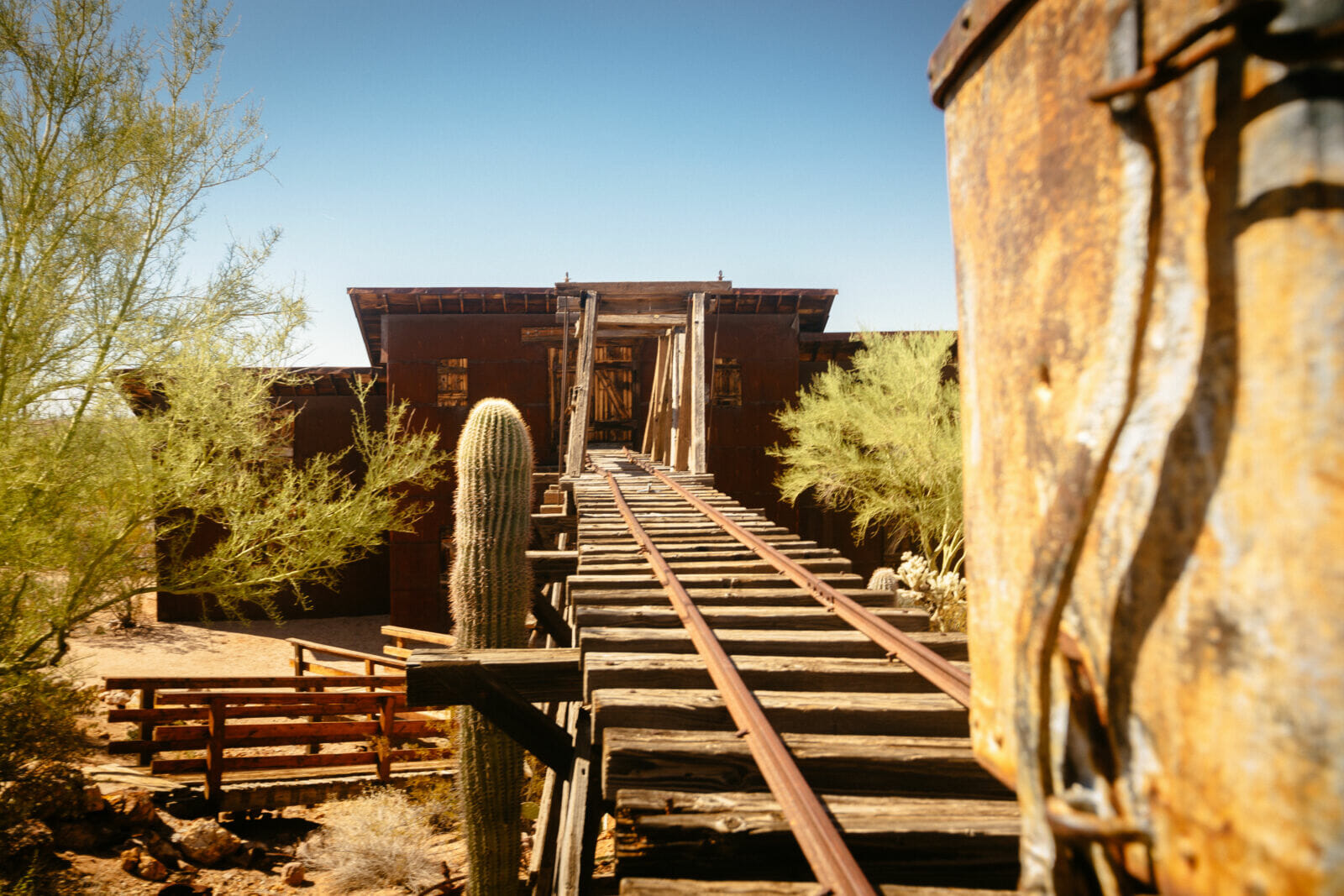According to WhiteHouse.gov, global demand for critical minerals is “set to skyrocket.” With the push to transition to clean energy, demand is projected to increase by as much as 400% to 600% over the next several decades. Minerals such as lithium and graphite — utilized in the production of elective vehicle (EV) batteries — will rise by 4,000%. And guess where these minerals are found? Or perhaps the better question is: how are these minerals obtained? The answer: mining. In particular, revisiting old mining sites.
Presently, Arizona produces 72% of the nation’s copper; contains 375 million pounds of uranium reserves (in the Arizona Strip) and boasts multiple other minerals from molybdenum, gold and silver to peridot, perlite and more.
Despite the overwhelming need for minerals to not only support the growing shift to clean energy but also for national defense, medical and consumer requirements (among others), domestic mining roadblocks are complex and many. For example, according to The University of Arizona (UArizona) Superfund Research Center, the first step in securing a copper mining site — prospecting and exploration — “can take two to eight years to complete, and may cost from $500,000 to $15 million overall.” And that’s just step one! The next “development” stage can take anywhere from 4-12 years.
READ ALSO: Arizona mining industry steps up to meet skyrocketing demand for copper
Revisiting old mining sites
So what is an industry that’s imperative to the fulfillment of critical minerals, but also faced with substantial financial and timing challenges to do? In the case of the Arizona mining industry, it’s applying creative approaches, one of which is revisiting mineral potential on former mining sites.
“Many of the closed mines of Arizona ceased mining activities, not due to exhaustion of a mineral resource, but due to the economic situations surrounding falling copper prices, increased costs and local break-even conditions,” explains Carson Richardson, chief of mineral resources and bedrock geology, mineral deposits, structural geology, and regional geology for UArizona. “There is still a lot of metal in many of Arizona’s closed mines — however, the economic conditions for each mine are unique and there would need to be elevated copper prices, significant reinvestment in infrastructure, people and permitting to reopen many of the closed mines.”
Adds Julie Neilson, associate research professor and director of the Center for Environmentally Sustainable Mining at the University of Arizona, “There is interest in going back to some of the legacy sites and re-extracting [minerals] because extraction technology in the 1800s wasn’t very good.”
Modern mining material waste — waste rock and tailings — which occur with every large-scale mining operation — is typically either reprocessed or utilized for construction purposes (including constructing dikes, impoundments, haul roads and even cemented mine backfill). More primitive mining sites, however, still contain stores of rock and tailings that could contain critical minerals.
Picking the right spots
“Waste rock is a rock that was either overburdened material that was excavated from the open pit before they got down to where the ore was,” Neilson explains, “and mine tailings are the fine material left over after they’ve pulverized the rock and taken out the copper, gold or silver that they’re mining.”
Revisiting the legacy sites now — with improved technology and practices — holds the potential to acquire much-needed minerals.
“Today all of the easier ore on planet Earth is gone,” explains Adam Hawkins, founder and president of Global External Relations, “So what you have left is deposits that we didn’t know were there before that we’re discovering because we have better tools. We have better technology. You have resources that weren’t considered of economic value before because they weren’t in a high enough quantity or high enough percentage grade to make sense to mine.”
But how do mining experts and operators know which legacy sites contain viable mineral resources?
“Geologic mapping of the areas around ore deposits can help constrain whether or not there might be post-mineralization structural controls, such as faults that offset ore bodies and have moved pieces across the landscape,” Richardson says. “This, coupled with understanding of system zonation and the role of structures, is what David Lowell used to explore and discover the Kalamazoo deposit as an offset piece of the San Manuel porphyry copper deposit near Mammoth, Arizona.”
Current impact
An example of a current Arizonan legacy site being revisited for its mineral properties is the Cactus Mine. During its active mining lifecycle, the American Smelting and Refining Co. (ASARCO) operation extracted 38 million tons, with 400 million pounds of copper, 759,000 ounces of silver, and 27,000 ounces of gold.
“When ASARCO went through bankruptcy, this is one of the properties that was included in their bankruptcy filing that was transferred over to an environmental custodial trust with some money for the care and maintenance of the site,” Hawkins says.
Adds Richardson, “Arizona-Sonoran Copper Company is working to reopen the mine, now called Cactus. This would be the first reopening of a large, open pit mine several decades after initial closure in Arizona.”
And, according to Richardson, ore minerals such as chalcopyrite, molybdenite, chalcocite, and copper oxide minerals have been discovered at the former active-mining site.
The discovery of new minerals from preexisting sites may also be encouraged by the Abandoned Mine Lands Grant, which Neilson describes as “a collaboration between the three State Universities: UArizona, Arizona State University and Northern Arizona University and Arizona Department of Environmental Quality, and is funded by the Arizona Board of Regents.
“The grant is to try to identify all the abandoned mine features in the state of Arizona, ultimately to put a health hazard associated with them and also an economic potential assessment associated with it,” Neilson says.
Drilling down
After evaluating the criteria Neilson mentioned, a former or abandoned mine site may be reevaluated as a possible location for mining critical minerals again. “Dr. Mark Barton, head of the Lowell Institute of Mineral Resources is the economic geologist,” Neilson continues, “and he is ultimately interested in the economic potential of some of these mine wastes.”
In February 2021, ResourceWorld.com reported that the Gold Basin company completed a drilling program in the Northern Arizona former Cyclopic mine, determining the area as “largely under-explored and [containing] multiple near-surface, oxide gold deposits. The two most significant historical deposits are named Cyclopic and Stealth.”
Although re-visiting former active mining sites is considerably still in its infancy, as technology and research advance, the safe discovery and extraction of minerals from former mining sites could continue to yield exciting discoveries and eventually further assist in meeting the needs of the economy and mineral demand, while also protecting and preserving the environment.




